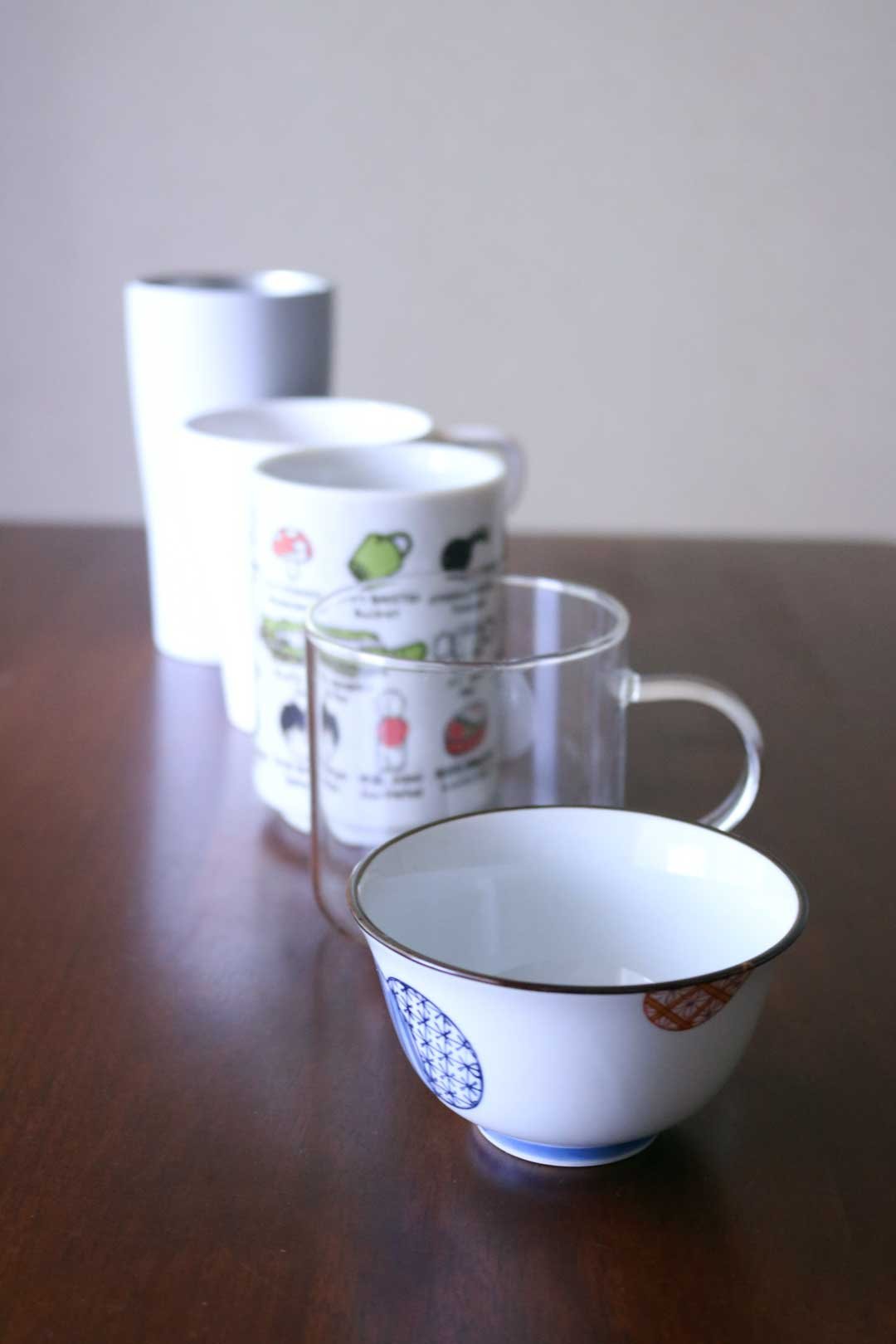The best cup to drink tea from
Big, small, thin porcelain, or sturdy stoneware, with or without a handle?
When it comes to tea, there are all sorts of cups that you can choose from.
Tea has a long History, and so does teacup. As tea spread around the world, various tea wares also made their appearance. But with so many options, it’s not easy to know which one to pick…
So, what is the best cup to drink tea from? That’s the question I’m going to answer in this article. Stay with me to learn how the cup impacts your tea, and how to choose the right teacup.
Does Teacup Matter?
While some people just grab whatever is available, others take the time to think about which cup will best suit them. Personally, I choose my teacup very carefully. Why?
Because the type of cup you use can have a big impact on:
The flavor and aroma of your tea
The overall drinking experience
So yes, the teacup does matter. In fact, I did a little test for confirmation.
A Little Experiment
Basically, I chose 5 different teacups:
1. Small white porcelain Gongfu-style cup
2. Japanese yunomi (湯呑み) ceramic cup
3. Big glass cup
4. Typical ceramic mug
5. Tall metal cup (stainless steel)
And used them to drink 2 types of teas with totally different tastes:
A light Green tea
A strong Red tea (known as Black tea in the West)
Here are my findings:
Both teas appeared in very different colors depending on the cup used
The taste of the tea was more pronounced when drinking from a cup with a thin lip
The metal cup kind of ruined both teas’ aroma because it had a metallic smell
Some cups were quite hotter than others to the touch, and some teas got colder quicker
I unconsciously associate Green tea with Asia, so it felt more right to drink it with the Gongfu cup and the Japanese yunomi (湯呑み).
So each cup gave me a slightly different experience of the same tea.
3 Factors to Take Into Account When Choosing a Teacup
When it comes to picking the best teacup, there are mainly 3 things to think about.
1 - The Material
I would recommend you avoid using materials like plastic or metal. A metallic cup might give a metallic taste to your tea, and plastic absorbs flavors and odors easily. Meaning your tea might taste off because you used the same cup to drink coffee too. Plus, plastic when in contact with hot liquid can leach toxic chemicals like BPA.
It’s better to opt for ceramic or glass cups. These materials don’t alter the aroma or taste of the tea. Glass especially is cool when you brew the leaves directly inside your cup because you can see the leaves slowly unfold.
Here is a summary of each material's pros and cons:
Extra info: Unglazed ceramic can also be an option. However, their porosity means cracks inside the cup retain flavors. Asian people like this unglazed style and prize such ceramics (like Japanese Bizen ware) because they consider it improves the flavor of the tea.
2 - The Size, Shape, and Design
Choose a cup that accommodates the amount of tea you want to drink. A conventional teacup can hold around 150ml. Of course, it depends on your brewing style.
Go for a capacity of 30-100ml for a Gongfu-style brewing with a Gaiwan
And around 150-200ml for a classic Western-style brewing
Also, the shape and thickness will impact the temperature and taste of your tea. Thin lips will give you a more intense taste because they allow the tea to reach your tongue’s taste buds more directly. But they also cool faster compared to a cup with thick walls. And narrow rims tend to keep your tea hot for longer than wide ones.
The design should also be appealing to your eyes. The proverb ¨You eat with your eyes¨ holds truth here. In fact, a 2019 study confirmed that the design of a teacup could influence your perception of a tea’s taste and scent.
Finally, try to handle the cup and see how it fits in your hands. It should feel comfortable when holding it.
3 - The Actual Tea
Another critical factor is the tea itself. Every culture has its own tea and specific tea ware, and your drinking experience can be enhanced by just matching the cup to the tea.
For example:
A classic Earl-Grey might taste better in an elegant porcelain teacup with a handle like the British use for tea-time.
A traditional Japanese yunomi (湯呑み) cup will be a great match for a Sencha Green tea (煎茶).
And an authentic Chinese Pu Er tea is best savored with a tiny teacup for multiple steeping.
You might even ditch the cup altogether and grab a bowl because you feel like whisking some Matcha...
Of course, there is no rule that says you can’t drink ¨this tea¨ in ¨that cup¨. But matching the tea with its traditional tea ware will often give you the best results in terms of taste and experience.
FAQ
What is the Best Cup to Drink Tea from?
The best cup to drink tea from is the one that matches your favorite tea and brewing style, while not altering its flavor or aroma.
Favor ceramic and glass cups as they don't impact the taste of tea. Choose medium to big-size teacups for Western-style brewing, and small-size teacups for traditional Chinese-style brewing.
Do you Drink Tea from a Mug or a Cup?
Mugs hold more liquid than cups (approximately 240–350 ml). This makes them better suited for coffee or herbal teas (typically consumed in larger volumes).
Cups are usually smaller with a thinner lip, the best to savor a specific tea. Thin lips allow the drink to reach your tongue more directly, so you can taste all its nuanced flavors.
Drinking Tea Better
Now you know what are the key points to choosing the best cup to drink tea, and how it can influence your tea-drinking experience. But there are a few other ways to enhance a tea break.







